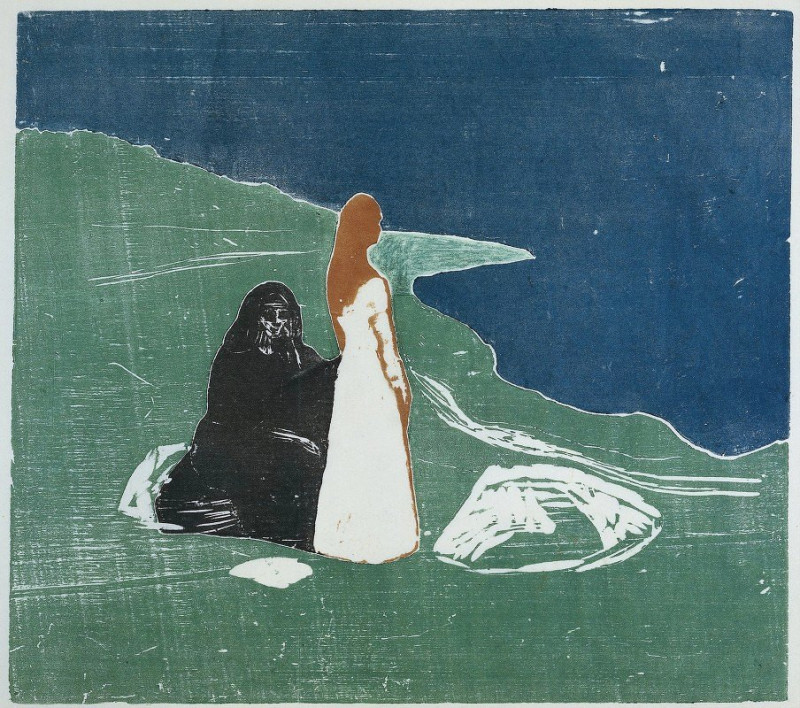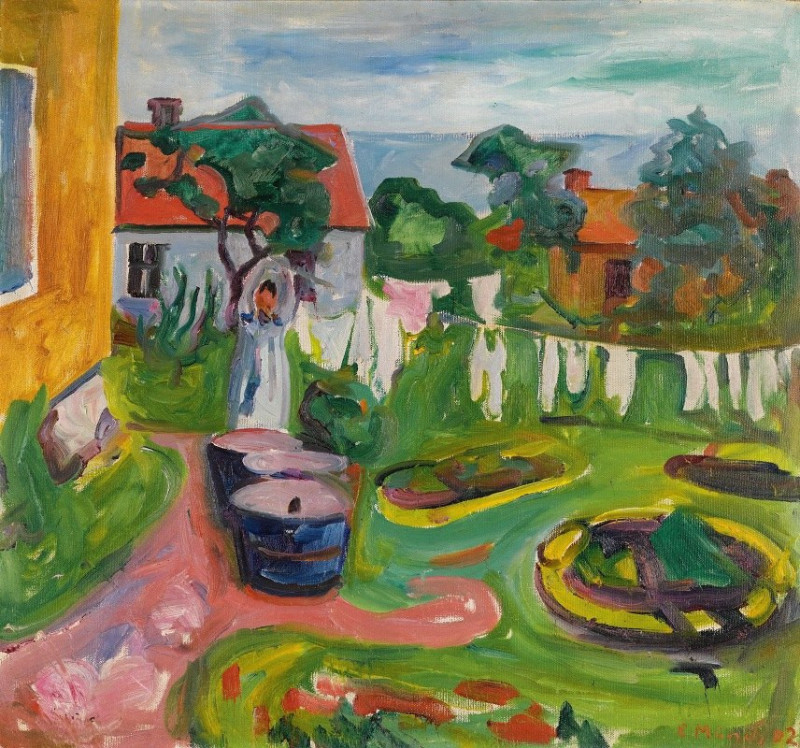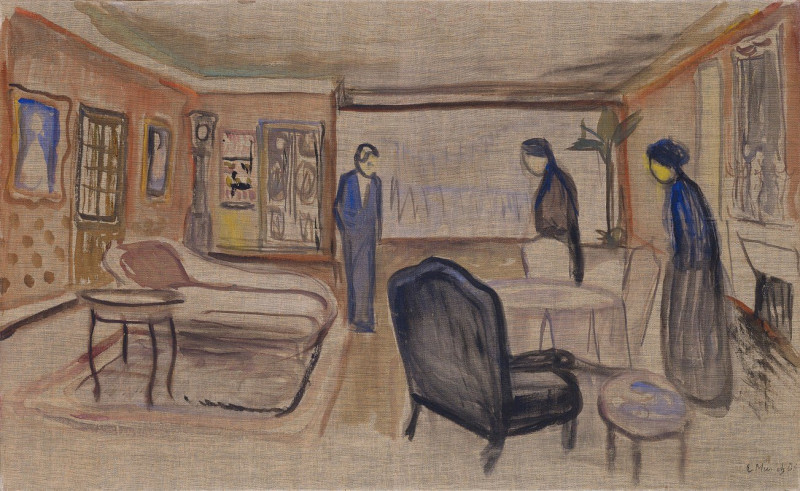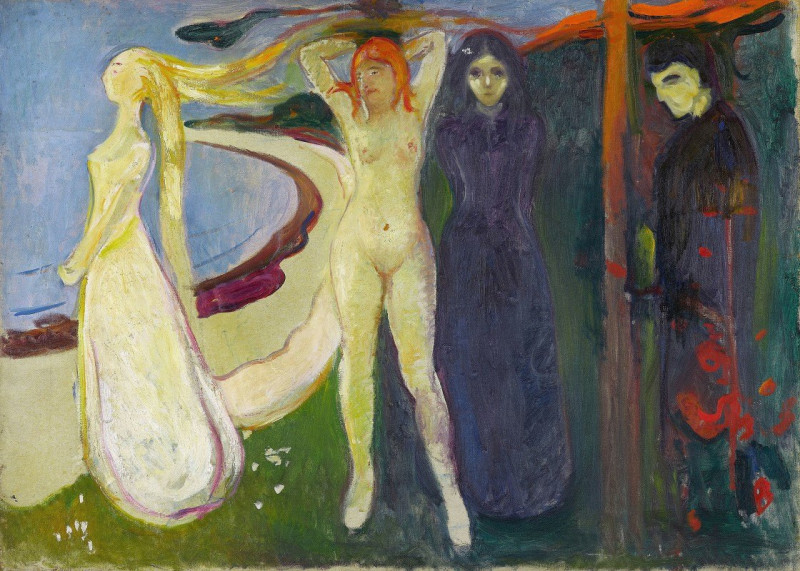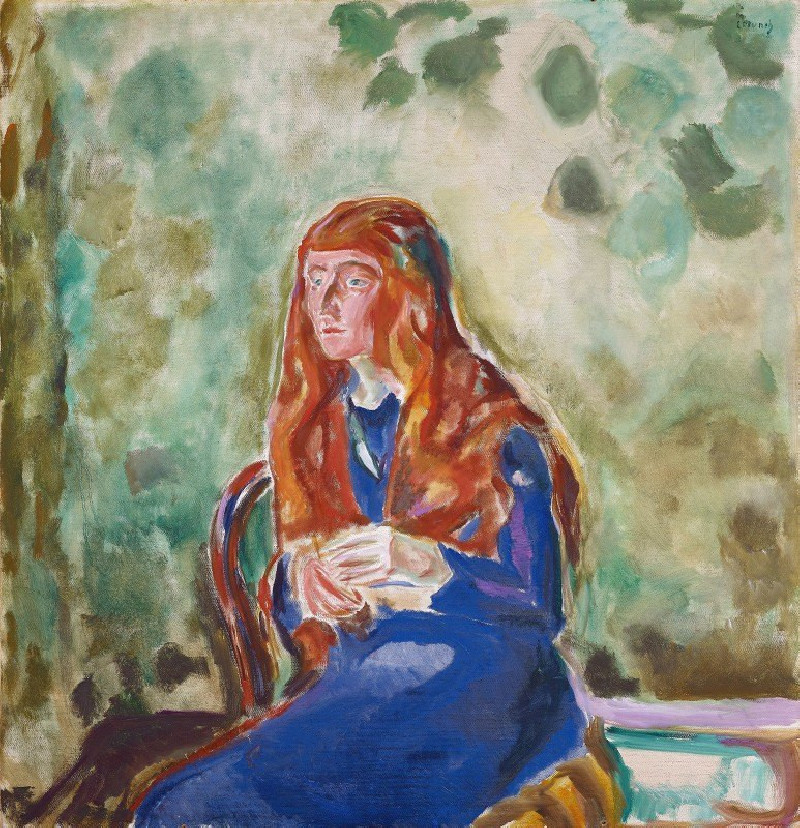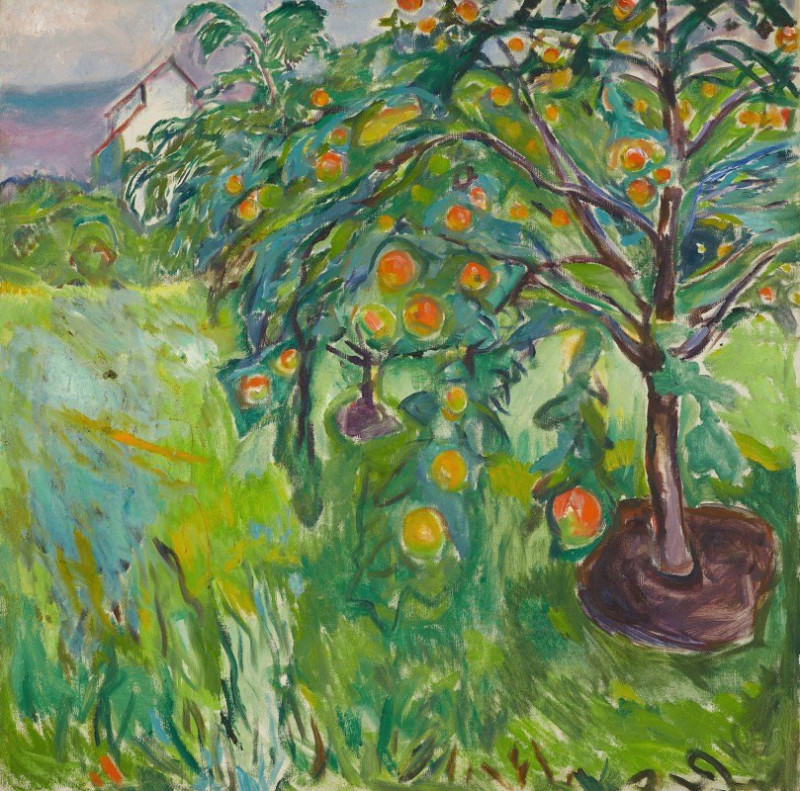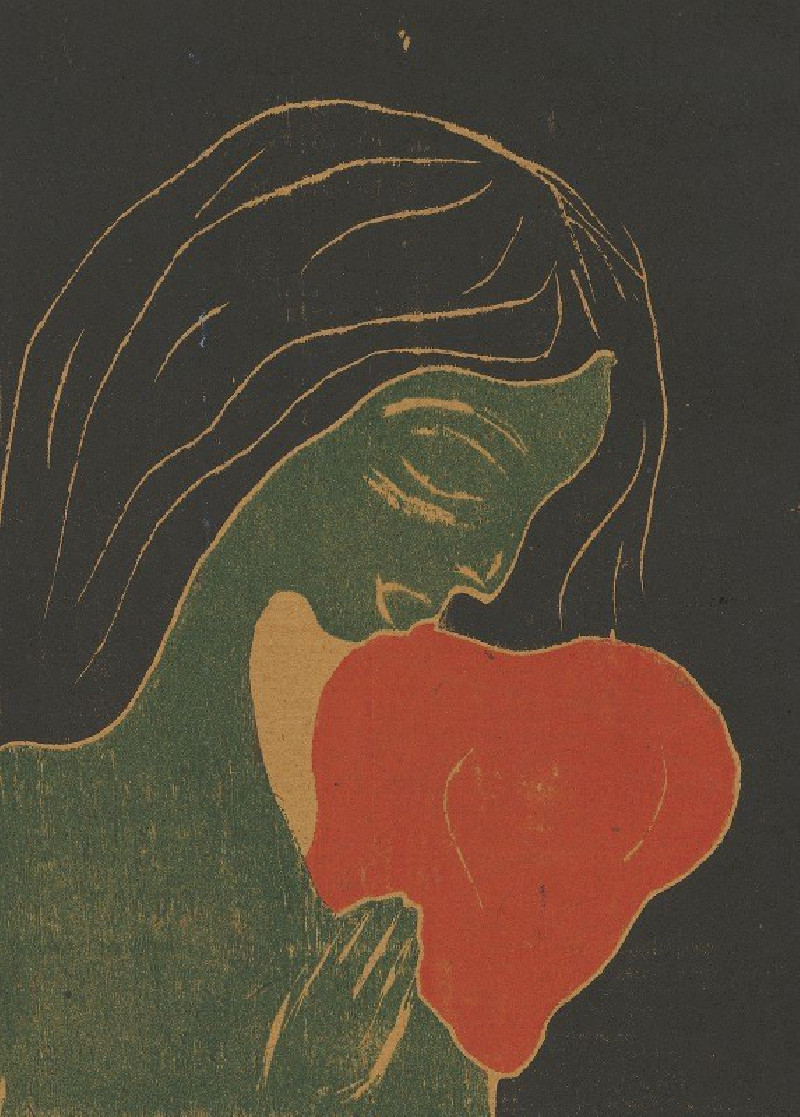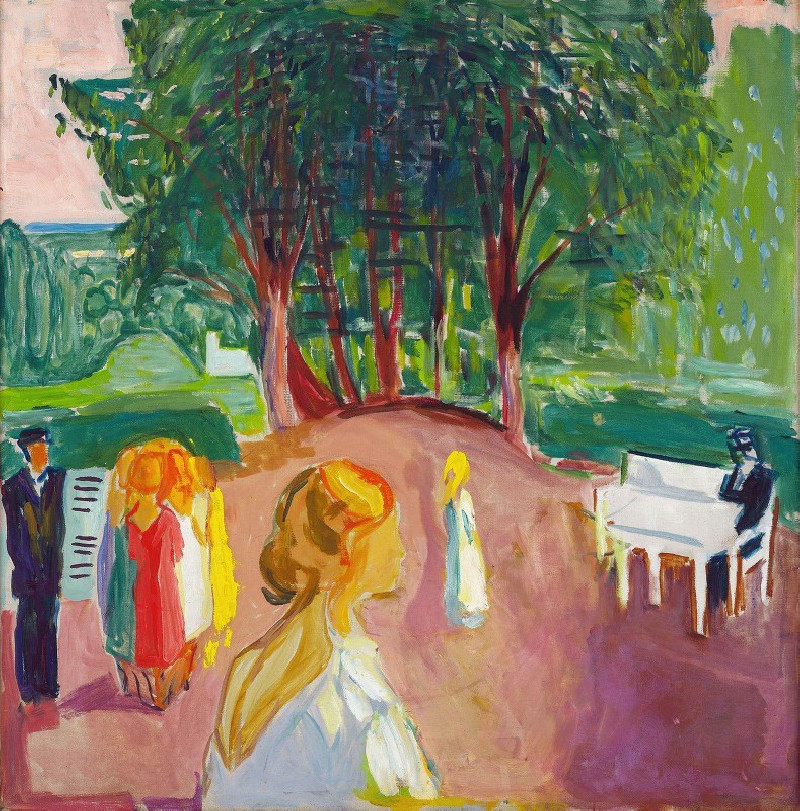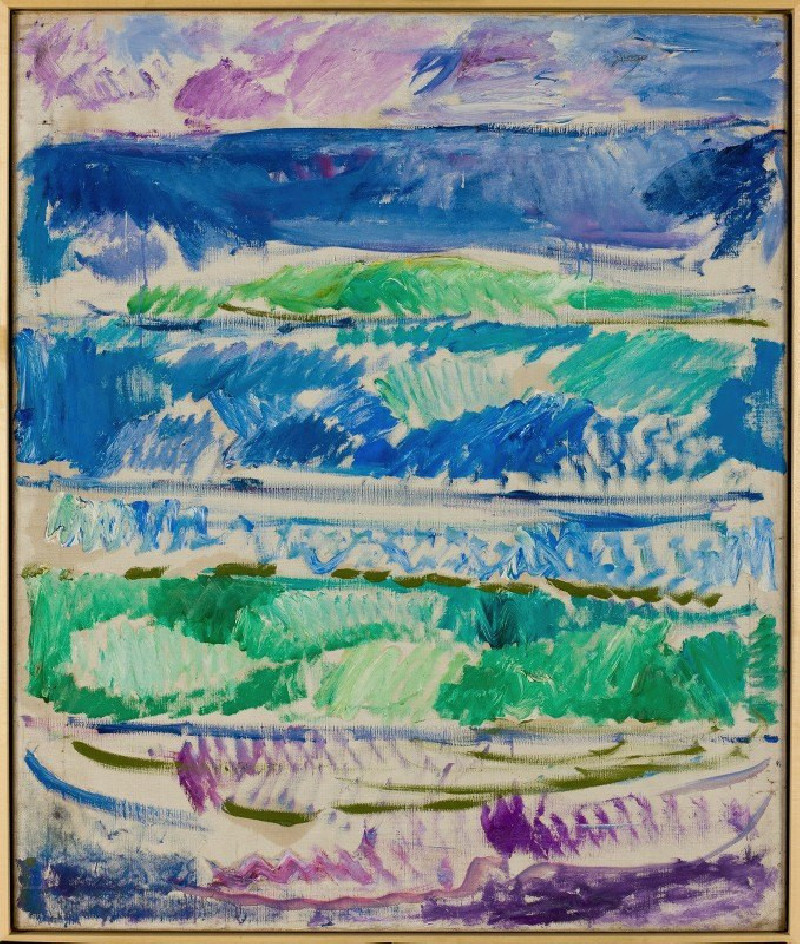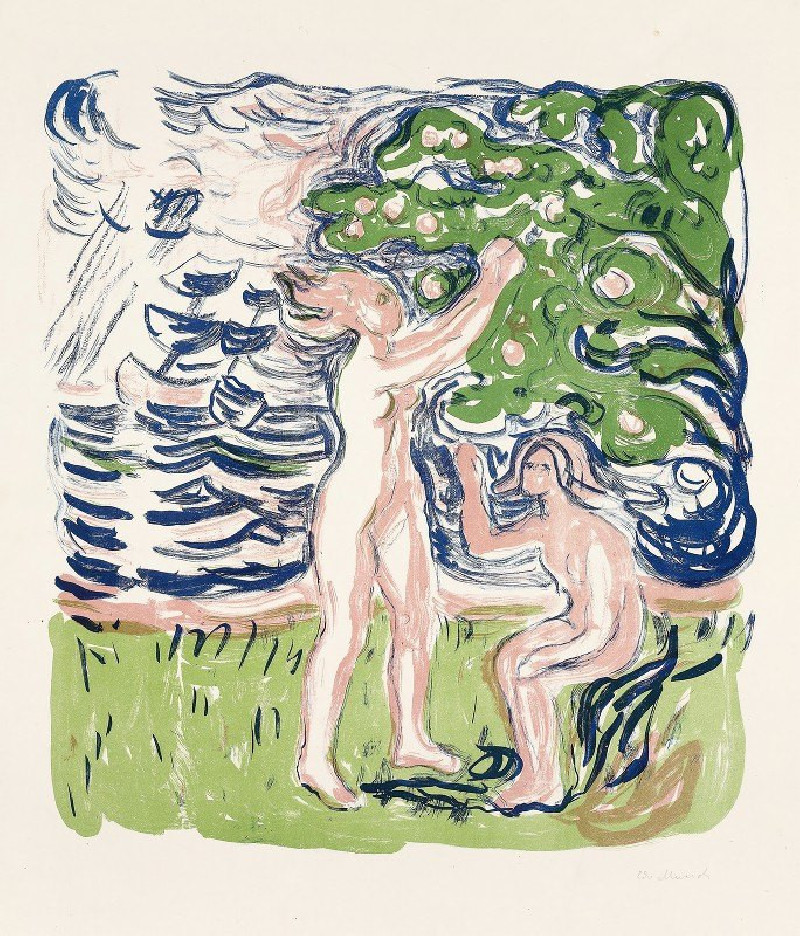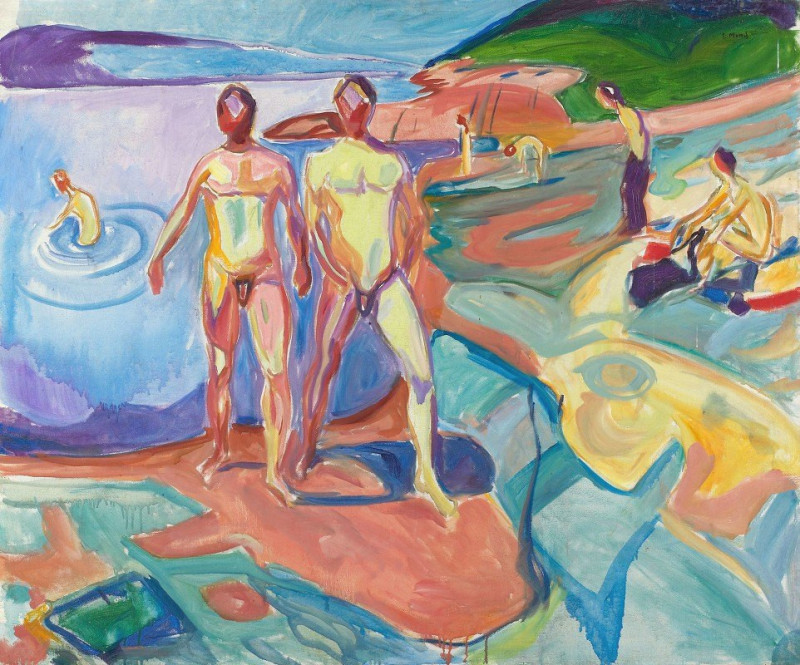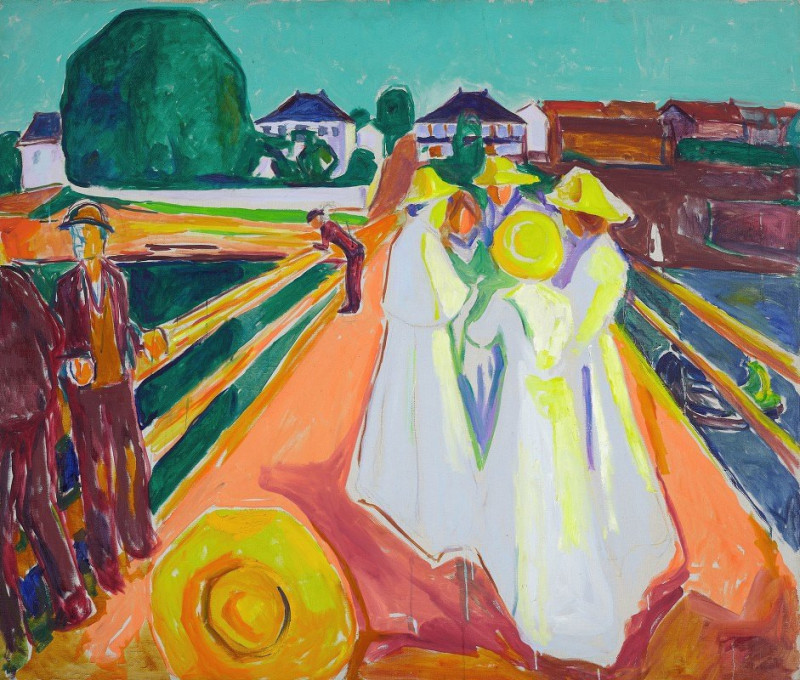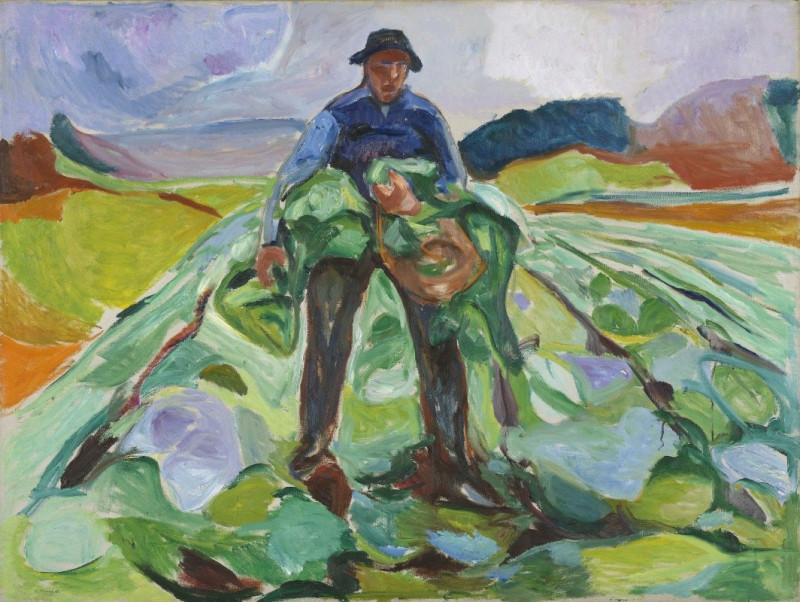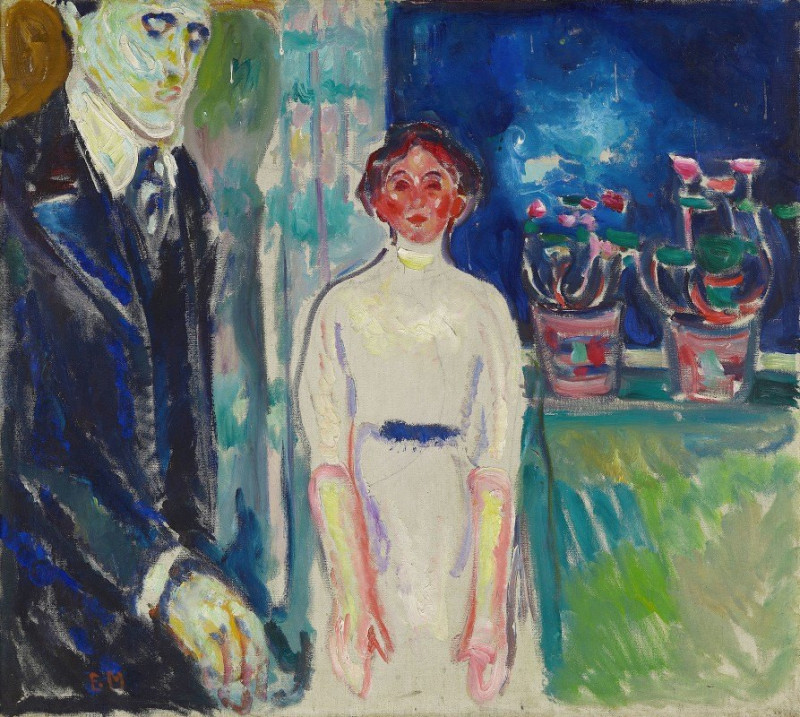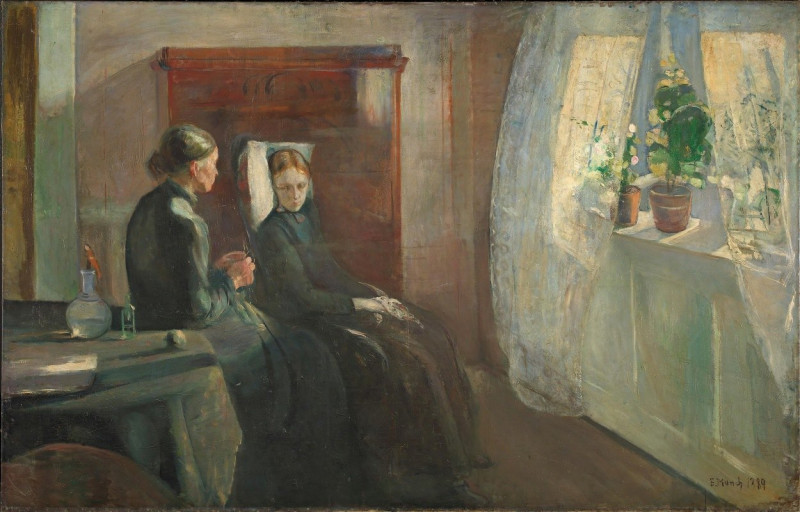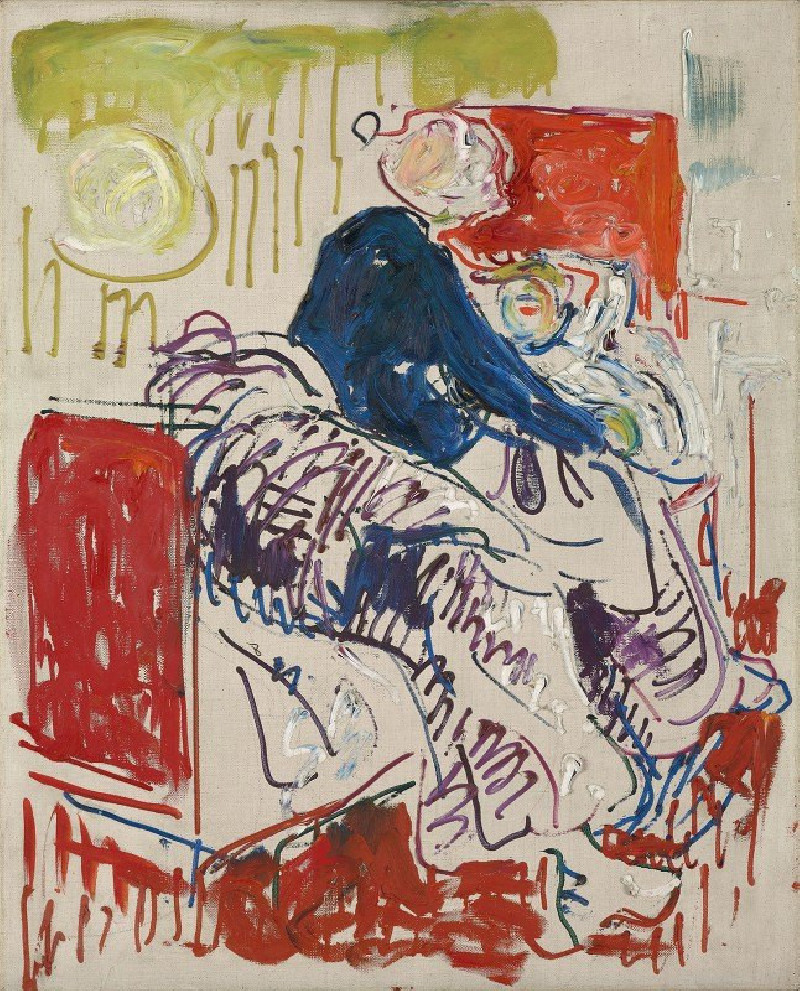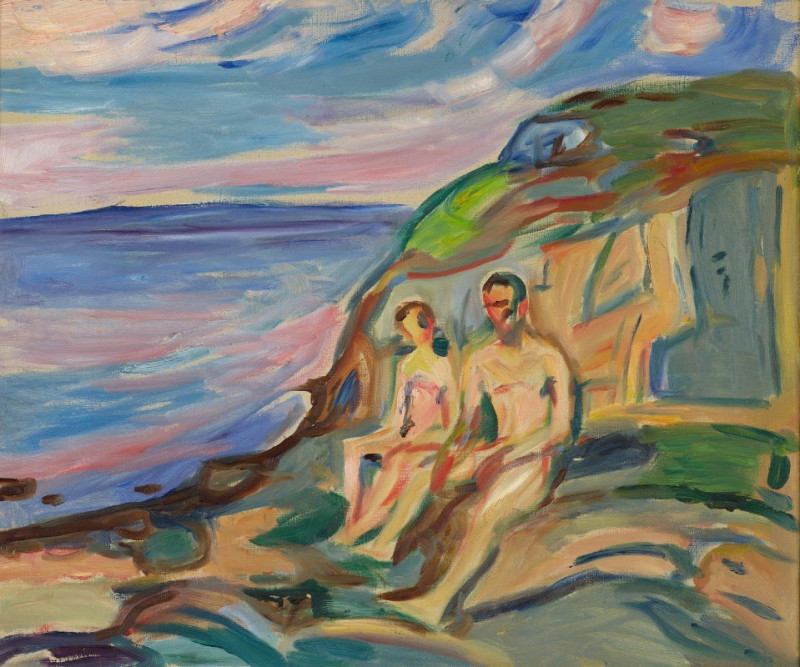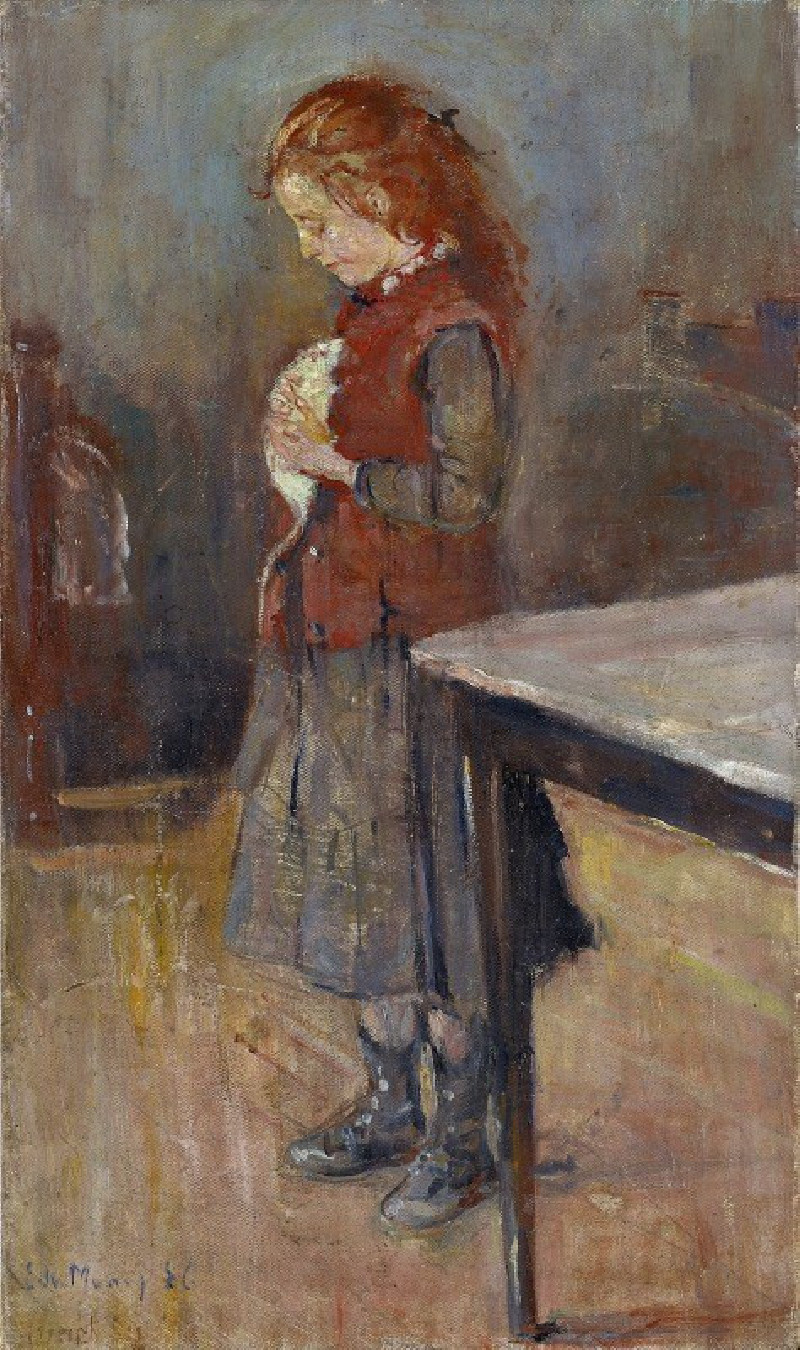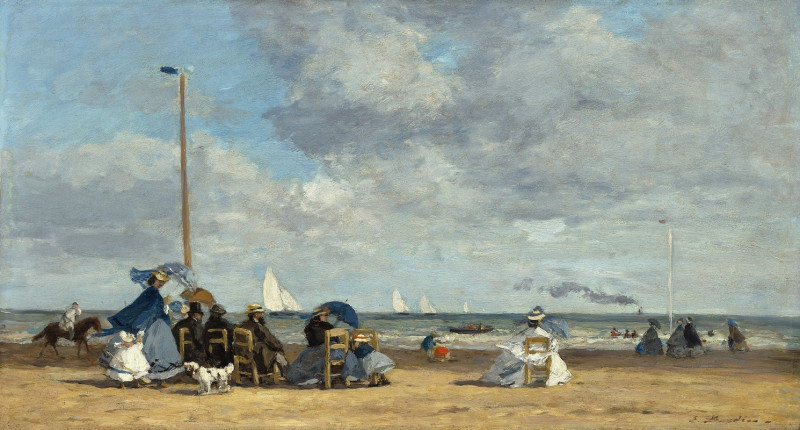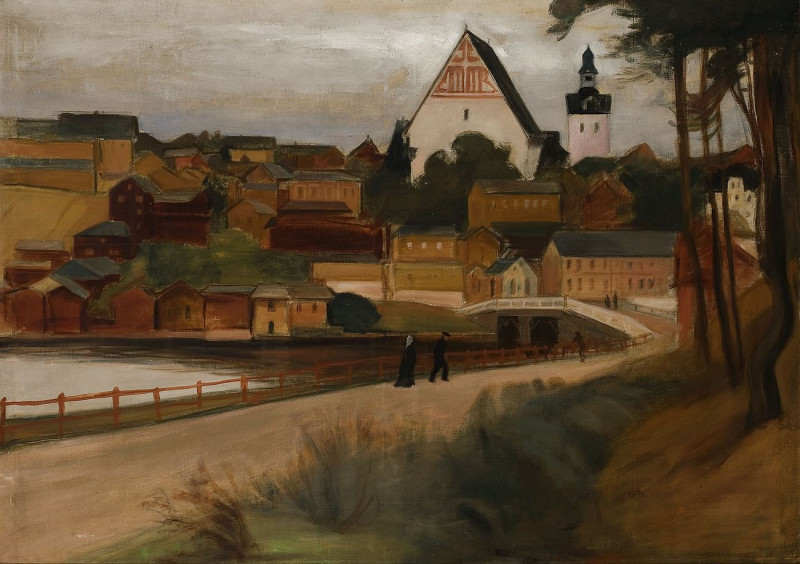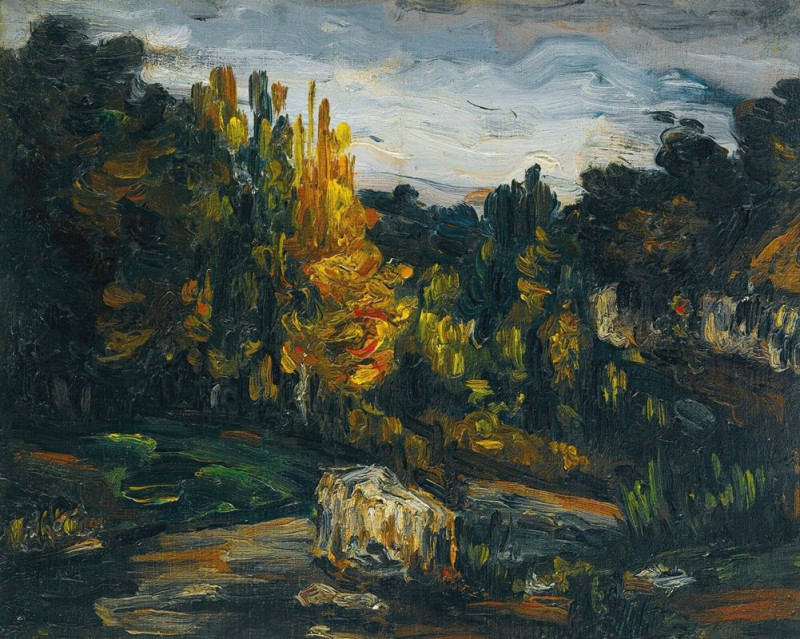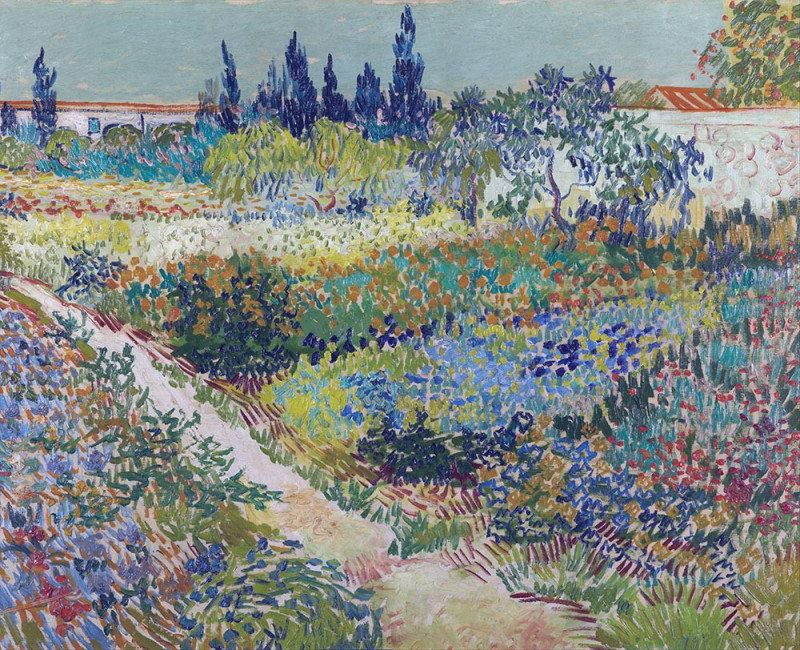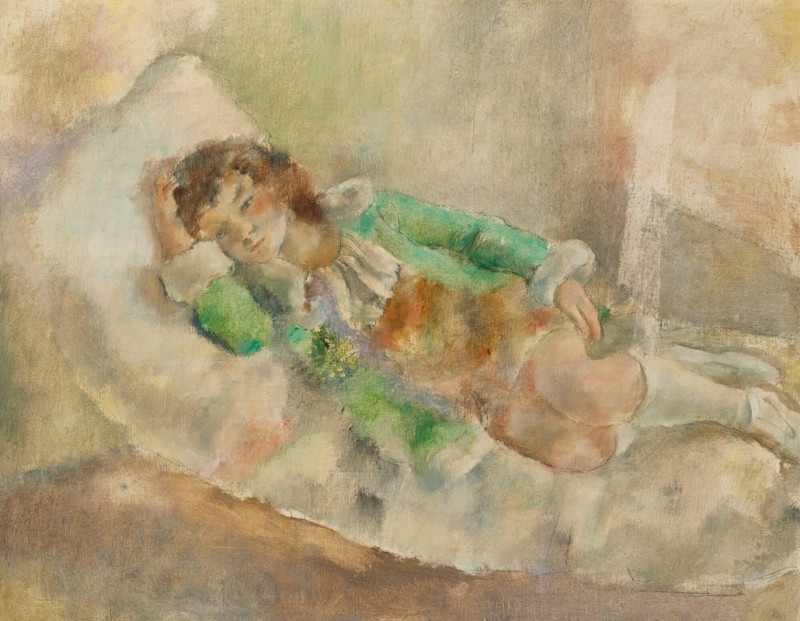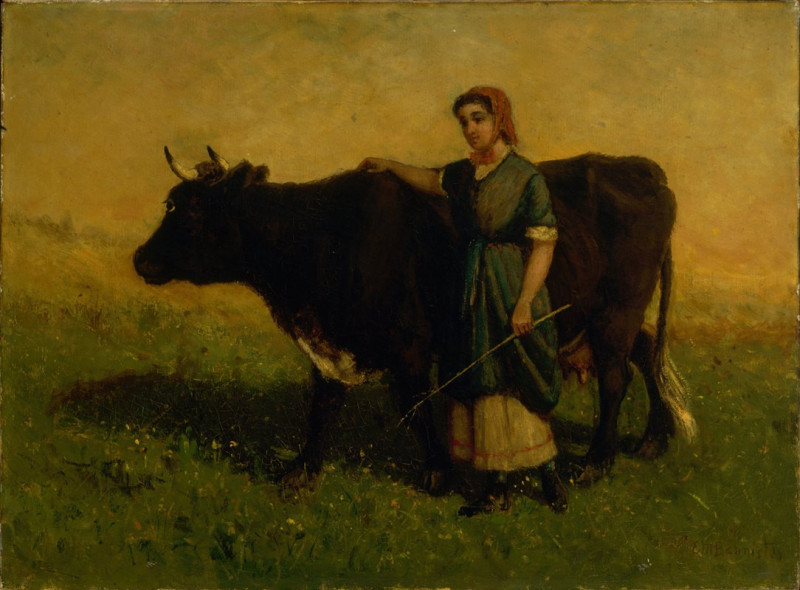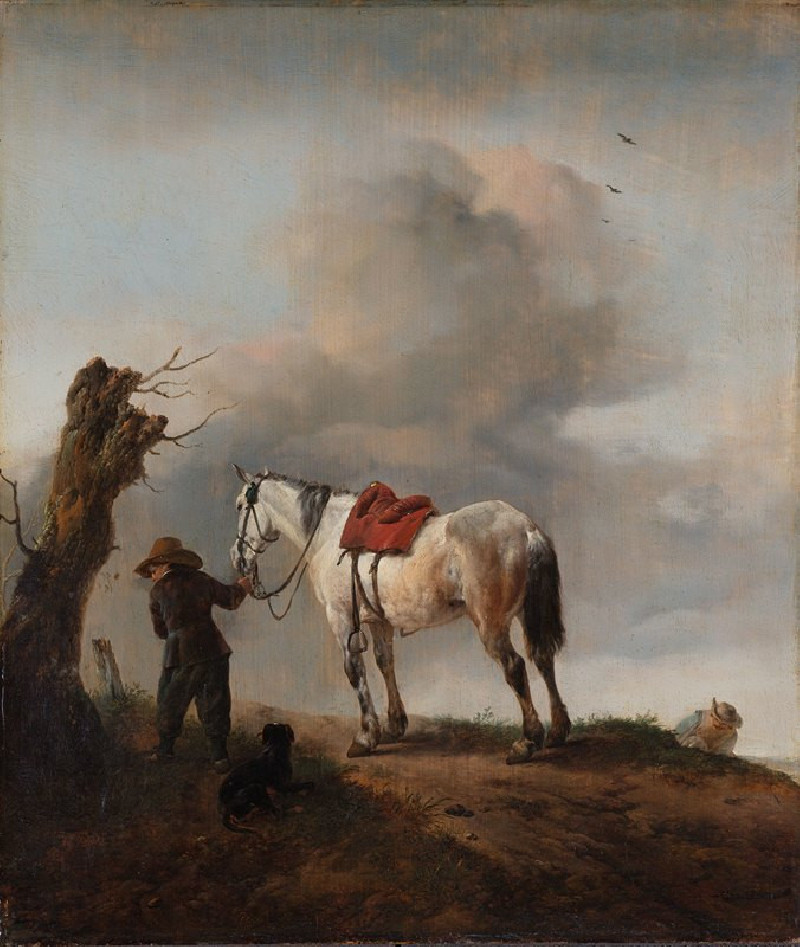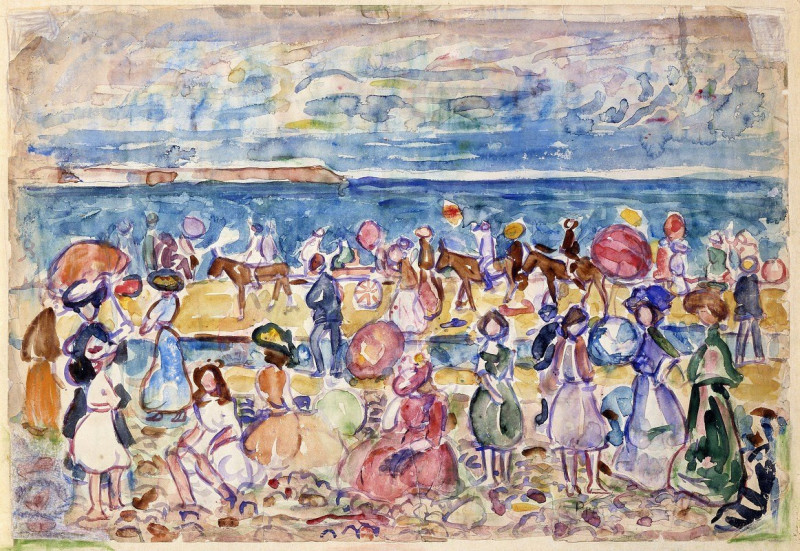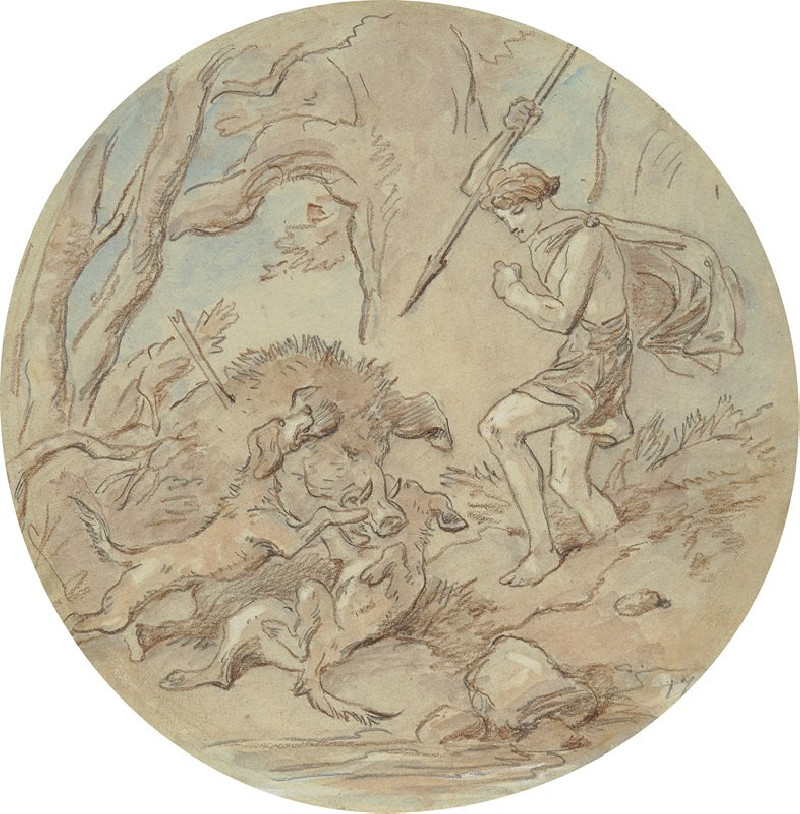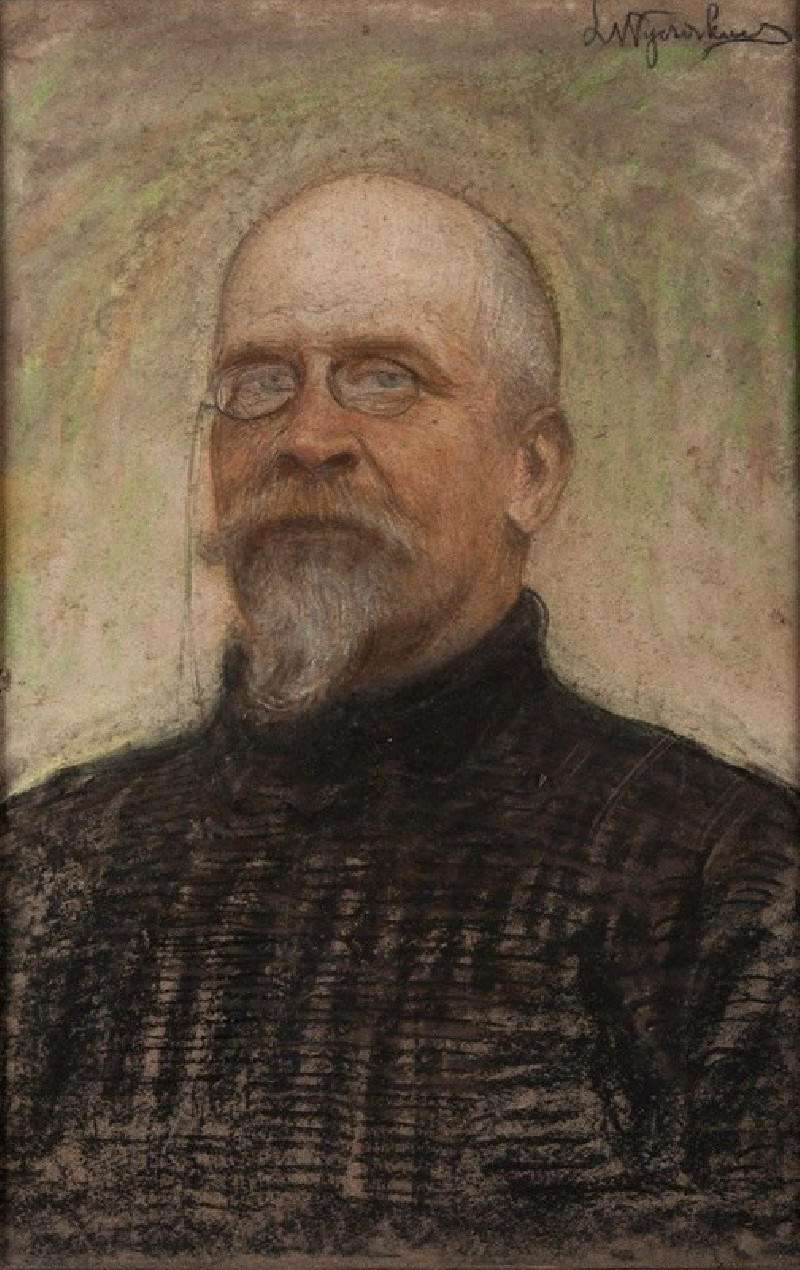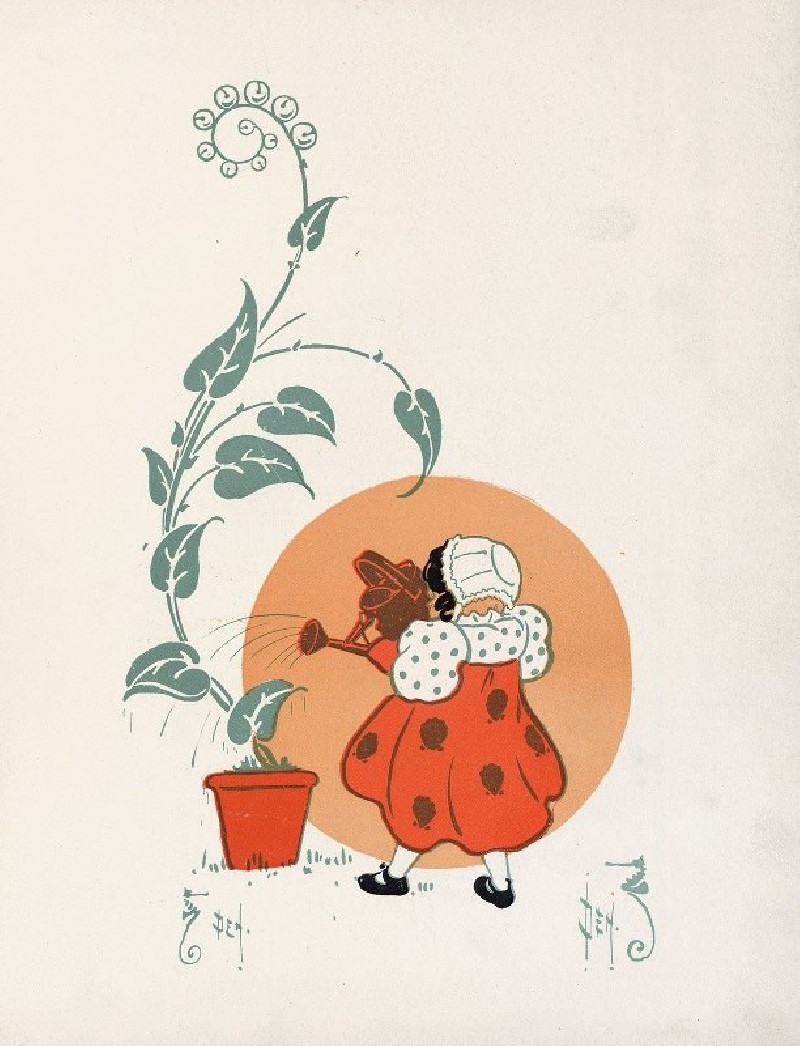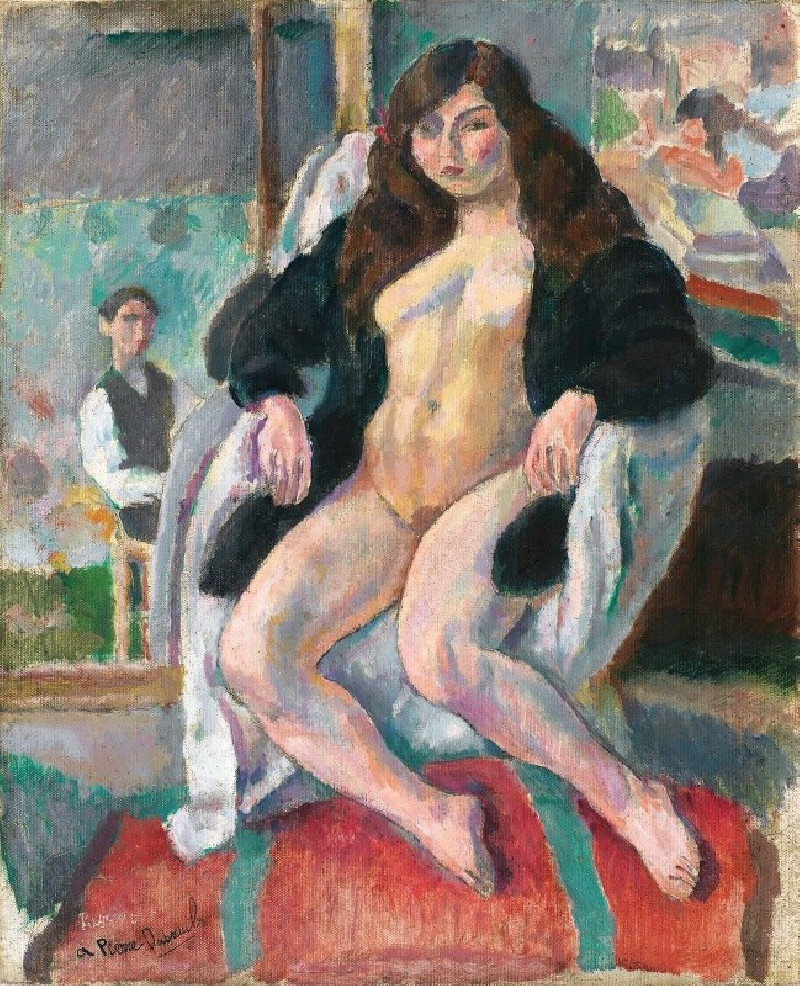Two Women on the Shore (1898)
Technique: Giclée quality print
Recommended by our customers
More about this artwork
"Two Women on the Shore," painted in 1898 by the renowned Norwegian artist Edvard Munch, is a striking example of his unique approach to art, particularly in his use of bold colors and emotive themes. This particular work is done in the medium of woodcut, a technique that allows for the vivid contrasting colors and distinct outlines apparent in the image.The composition portrays two women, each distinctly different in appearance and possibly symbolic in nature. On the left, a figure robed in a dark cloak sits ponderously, almost blending into the shadow it casts, while the more prominently featured figure on the right stands upright, donning a gown that transitions from a pale to a deeper tan hue. This figure’s posture and clearer outline might suggest youth or vitality in contrast to the possibly older or more reflective figure in black.The background with its broad strokes of green and blue introduces a simplified seascape, signifying the presence of the shore mentioned in the title. The use of green in the sea juxtaposed against the deep blue of the sky creates a somewhat surreal, dreamlike quality that Munch is well-known for.Interpreting Munch's work often invites reflections on existential themes, introspection, and human emotion. The contrasting visuals between the two figures could be illustrating themes of life and death, youth and old age, or change versus constancy.
Delivery
Returns
Edvard Munch (12 December 1863 – 23 January 1944) was a Norwegian painter. His best known work, The Scream (1893), has become one of Western art's most iconic images.
His childhood was overshadowed by illness, bereavement and the dread of inheriting a mental condition that ran in the family. Studying at the Royal School of Art and Design in Kristiania (today's Oslo), Munch began to live a bohemian life under the influence of the nihilist Hans Jæger, who urged him to paint his own emotional and psychological state ('soul painting'); from this emerged his distinctive style.

